Public Archive
A patchy record of DIY satellite imagery and weather notes since 2020. The open-weather public archive is open to everyone willing and able to contribute.
Words for Climate
An evolving set of words chosen by contributors to reflect their experiences of the climate crisis.
Filter by
Ground Station Type
Automatic Ground Stations are local, semi-permanent stations that record and upload satellite transmissions automatically once per day. Manual ground stations are DIY and often mobile; operators manually record and upload satellite transmissions.
Satellites
The archive contains Automatic Picture Transmissions (APT) by US weather satellites NOAA-15, NOAA-18 and NOAA-19.
Nowcasts
Collective earth-sensing events led by open-weather, co-produced by a network of contributors around the world.
Contributors
A list of tagged contributors only. Please contact us if you want to be added.
Automatic Ground Stations
Search
2587 archive entries
× Clear Filters
2025-05-20 23:05:00
Maufox
Mauritius, Mauritius
Mauritius
NOAA-18

2025-05-20 23:10:00
Foto Colectania
Hangar
Ràdio Web MACBA
Barcelona, Spain
Spain
NOAA-19

2025-05-20 22:13:00
Goownown Growers
The Seaweed Institute
CAST, Helston, Cornwall, United Kingdom
United Kingdom
NOAA-19

2025-05-20 22:11:47
Alan Robertson
Bathgate, West Lothian, UK
UK
NOAA-19
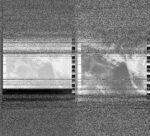
2025-05-20 20:01:00
Iterable pueyrredon
Cordoba , Argentina
Argentina
NOAA-15
2025-05-21 06:56:00
Oppressive Heat
Phnom Penh, Cambodia
Cambodia
NOAA-15

2025-05-20 21:41:00
Iterable pueyrredon
Cordoba , Argentina
Argentina
NOAA-15
2025-05-20 22:55:00
Iterable pueyrredon
Cordoba , Argentina
Argentina
NOAA-18
2025-05-20 22:56:00
Iterable pueyrredon
Cordoba , Argentina
Argentina
NOAA-19
2025-05-20 22:15:00
Heidi Neilson
Gilboa, New York, United States
United States
NOAA-19

2025-05-20 22:16:32
Derrick Yohn
Transfer, Pennsylvania, United States
United States
NOAA-19


Current weather conditions from my Home Weather System. Image is pretty bad tonight - a lot of noise. May need to relocate antenna.
2025-05-20 23:48:00
Filip Shatlan and Diana Engelmann
Gainesville, Florida , United States
United States
NOAA-18
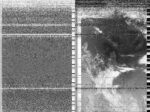
2025-05-20 22:41:00
Zack Wettstein
Seattle, United States
United States
NOAA-19

2025-05-21 10:51:00
Cyprus Amateur Radio Society
Nicosia , Cyprus
Cyprus
NOAA-19

2025-05-21 09:09:00
Goownown Growers
The Seaweed Institute
CAST, Helston, Cornwall, United Kingdom
United Kingdom
NOAA-15

2025-05-20 21:29:54
Soph Dyer
Paulinengasse, Wien, Austria
Austria
NOAA-18


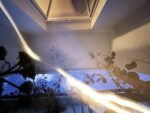
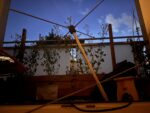
"We used to swim in the river at this time of year" a friend laments. It's true that the unheated, outdoor public pools have been open for almost three weeks, but I doubt that they've had many visitors. As a Northerner, I am tempted by the icy rewards of cold swim but I know that this is not what most Viennese have in mind when they think of the Freibäder.
From the other side of the Polar Jet Stream, my sister, Ray, writes that the UK has been dry and wam. It's so dry that the earth on the farm has cracked into irregular, tessellating shapes.
Earlier in May, when visiting family in England I read sections of my mum's childhood diary. The diary had been left out to cheer-up my Gran who has dementia. Each entry opens with a single line about the weather. On this day in 1971, Hampshire was the "same as yesterday", which was "a bit windier". Two days prior, it had been "very sunny and warm", my mum's 12-year-old self wrote.
2025-05-21 09:05:40
Alan Robertson
Bathgate, West Lothian, UK
UK
NOAA-15

2025-05-21 10:27:54
Richard A Carter
University of York, Campus East, United Kingdom
United Kingdom
NOAA-19


Alongside these soundings I have been conducting another small project of my own - Nephoscope. Named after 19th century instruments for measuring the movements of clouds, my digital equivalent analyses these movements using the camera in my phone, using the data to then generate a form of poetry over the video feed. I like this idea of these two electronic instruments, satellite and nephoscope, working together to map and articulate the atmosphere along two different registers, and at two very different scales.
2025-05-21 13:08:00
Foto Colectania
Hangar
Ràdio Web MACBA
Barcelona, Spain
Spain
NOAA-18

2025-05-21 12:05:54
Alan Robertson
Bathgate, West Lothian, UK
UK
NOAA-19
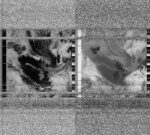
2025-05-21 12:02:20
Richard A Carter
University of York, Campus East, United Kingdom
United Kingdom
NOAA-18
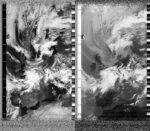
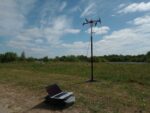
2025-05-21 12:06:00
Richard A Carter
University of York, Campus East,
NOAA-19

2025-05-21 10:16:00
Iterable pueyrredon
Cordoba , Argentina
Argentina
NOAA-19
2025-05-21 11:52:00
Iterable pueyrredon
Cordoba , Argentina
Argentina
NOAA-18
2025-05-21 23:26:00
Centre for People, Place and Planet
Perth , Australia
Australia
NOAA-18


2025-05-21 22:38:00
Oppressive Heat
Phnom Penh, Cambodia
Cambodia
NOAA-18

2025-05-21 12:12:00
Heidi Neilson
Gilboa, New York, United States
United States
NOAA-18
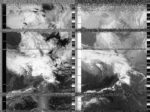
2025-05-21 18:53:31
Alan Robertson
Bathgate, West Lothian, UK
UK
NOAA-15
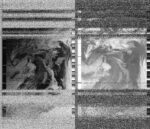
2025-05-21 22:52:00
Maufox
Mauritius, Mauritius
Mauritius
NOAA-18
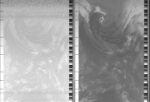
2025-05-21 12:35:00
Zack Wettstein
Seattle, United States
United States
NOAA-18

2025-05-21 22:00:00
Hospitalfield
Arbroath, Scotland
Scotland
NOAA-19
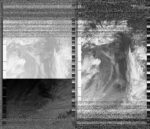


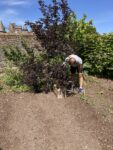

I’ve been saying it’s not rained for a month for a while now. It must be longer. It gives me a sense of unease. Scorched grass. Arid dune-scapes. A feeling that there’s dust hanging in the air. The BBC reports the driest spring in 60 years. Getting frustrated by sprinklers on pristine university lawns, while there’s advice from Scottish Water to take short showers. According to SEPA my area has ‘moderate scarcity’ of water, one step below ‘significant’.
I’ve headed over to Hospitalfield today to check on the Automatic Ground Station. The cool of the inside of the building gives me the feeling of being in my mum’s school classroom during the holidays. It’s quiet, lots of the staff are away on a trip down south. I tell Veronika I’m going up the tower, just for safety. We’ve not received an image in a few days so clearly something is not working. The AGS is housed in the object collections store room, halfway up the spiralling staircase to one of the towers: the antenna on its roof. I have images in my head of the antenna dislodged and dangling down the side of the tower, or the AGS strewn across the floor in bits. Instead when I get to it, nothing has moved and it’s politely telling me what’s wrong on its display screen: Wifi error. After un- and re- plugging the set up it’s back to displaying the time of the next pass (10.00pm) and seems to be working fine. While I wait for the reboot I notice the window is open, and a plump wood pigeon is on the sill, threatening to come inside (it’s clearly been in before). I squeeze past the rail of costumes, and various Victoriana to close it, pushing the window gently into contact with the puffed up bird. It ruffles and quickly drops off, down and away in response.
Out on the roof of the tower I’m drawn again to the bricks, the lichen on the outer walls, and the lightning rod. The antenna has joined this collection of weathering things: as though the tower’s small footprint is some strange elevated plinth. There’s some speckles of patina now on the antenna, and its once-bright copper has dulled somewhat since we installed it: it’s settling in. I have a camera with me to document it in place, and I feel a bit daft as I spin around the tiny area trying to cover all the angles. It’s so bright it’s hard to see if I’m in focus so I blindly snap more than I need. The only cloud is a vague smear on the vast blue sky: like one weak skoosh from a nearly empty can of white spray paint.
From my spinning I notice I can see the water tower from here, on its hill above the pond. It’s sham-medieval, Victorian, and no longer supplies the town with water. I do a quick search on Canmore and find the impetus for its construction: “The drought of 1870 and the increase in housing around Arbroath precipitated the Arbroath Corporation to seek a supplementary water supply.” (Precipitated, ha). Its caverns must still contain gallons and gallons. A few years ago there were plans to turn it into a diver training centre (for offshore workers) but it didn’t come to anything. To the north there’s new housing going up on former grain fields. Peeking through the balustrade (parapet?) I can look over to more of this building’s towers: I know one is an old water tank and the other square one has sundials carved into its sandstone faces.
I head down and outside to find Ross to tell him about the pigeon (and that I’m off the tower). I find him in the back of the walled garden while another small drama is unfolding. Together we watch a man (summoned for this job) very calmly coax a bee colony into a new hive. It’s quite mesmerising to watch the bees drift in the air around us, and the mass of bee-bodies clustered on the elder bush gradually slump into the box. He says there’s four hives nearby, and that these bees are not from those, but he’ll find somewhere for them.
2025-05-21 21:57:09
Alan Robertson
Bathgate, West Lothian, UK
UK
NOAA-19
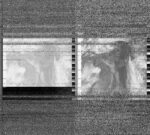
2025-05-22 06:30:00
Oppressive Heat
Phnom Penh, Cambodia
Cambodia
NOAA-15

2025-05-21 21:14:00
Iterable pueyrredon
Cordoba , Argentina
Argentina
NOAA-15
2025-05-14 23:30:51
Derrick Yohn
Transfer, Pennsylvania, United States
United States
NOAA-18


Included processed image from noaa-apt showing mapping
2025-05-21 23:36:00
Filip Shatlan and Diana Engelmann
Gainesville, Florida , United States
United States
NOAA-18
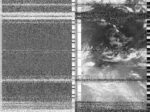
2025-05-21 23:40:07
Derrick Yohn
Transfer, Pennsylvania, United States
United States
NOAA-18



Including images from noaa-apt with overlay
2025-05-22 08:39:33
Alan Robertson
Bathgate, West Lothian, UK
UK
NOAA-15
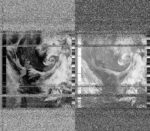
2025-05-22 11:53:00
Hospitalfield
Arbroath, Scotland
Scotland
NOAA-19
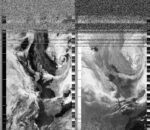
2025-05-22 12:55:00
Foto Colectania
Hangar
Ràdio Web MACBA
Barcelona, Spain
Spain
NOAA-18

2025-05-22 08:28:00
Iterable pueyrredon
Cordoba , Argentina
Argentina
NOAA-15

2025-05-22 11:53:13
Alan Robertson
Bathgate, West Lothian, UK
UK
NOAA-19

2025-05-22 08:50:00
Filip Shatlan and Diana Engelmann
Gainesville, Florida , United States
United States
NOAA-15

2025-05-22 10:03:00
Iterable pueyrredon
Cordoba , Argentina
Argentina
NOAA-19
2025-05-22 11:39:00
Iterable pueyrredon
Cordoba , Argentina
Argentina
NOAA-18
2025-05-22 22:25:00
Oppressive Heat
Phnom Penh, Cambodia
Cambodia
NOAA-18

2025-05-22 11:59:00
Heidi Neilson
Gilboa, New York, United States
United States
NOAA-18
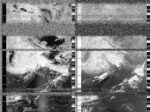
2025-05-22 22:39:00
Maufox
Mauritius, Mauritius
Mauritius
NOAA-18

2025-05-22 22:01:00
Cyprus Amateur Radio Society
Nicosia , Cyprus
Cyprus
NOAA-19

2025-05-22 21:46:29
Alan Robertson
Bathgate, West Lothian, UK
UK
NOAA-19
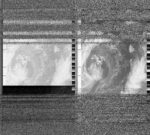
2025-05-22 23:23:00
Goownown Growers
The Seaweed Institute
CAST, Helston, Cornwall, United Kingdom
United Kingdom
NOAA-18


Today we had to collect washed up seaweeds for a craft workshop on seaweed pressing. We love the pressing process as a way to engage people with seaweeds.
The day is perfect and I had more time than I usually do to collect. The seaweeds best for pressing are red seaweed that tend to grow at the bottom or below the intertidal zone. When they become dislodged from their holdfasts, dying, they wash up. A northerly wind blew from the land, making the nearshore water calm – it was bliss.
Over the last half a year we have been trying to learn a little how to interpret these beautiful satellite images of familiar landmasses and unfamiliar cloudmasses, not often sure what exactly we are looking at. One thing has been certain over the last few months- it’s been mostly warm and dry. We have seen many clear outlines of the cornish coast send down to us via audio file from the satellites.
It feels sadly fitting to have spent these months with our ground station, thinking more about weather, whilst the coast our work focuses on is current experiencing the warmest heat waves since records began.
Throughout April and May we have seen an ‘unprecedented’ marine heatwave in the northeastern Atlantic. The Met Office has described this heatwave as being unusual in its intensity and persistence.
The last time this was observed was in 2023, at the time the most severe marine heatwave recorded in this part of the ocean. Then, both Ruth and I were working harvesting seaweed at every low tide on The Lizard peninsular. Unaware of the data being gathered that summer, we anecdotally saw a large bleaching and dieback of our favourite seaweed Dulse. We worried about its recovery after this local marine heatwave and we wondered what data was being gathered on the effect of heat on the very shallow waters of the intertide. The Dulse seemed to recover well but we couldn’t help wonder how many of these events the ecosystem could withstand. Now working less physically close to this ecosystem, seeing more extreme marine heatwaves, we are left even more concerned for their future.
Today, whilst the tide is metres above most species, I swim in the unseasonably warm waters and gather dead floating seaweeds, a tool to teach people about the ecosystem. I wonder how many of them have died prematurely due to heat or if this is just the normal natural lifecycle.
2025-05-22 23:22:47
Alan Robertson
Bathgate, West Lothian, UK
UK
NOAA-18
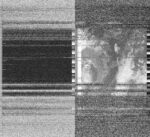
2025-05-23 06:06:00
Oppressive Heat
Phnom Penh, Cambodia
Cambodia
NOAA-15

2025-05-22 20:48:00
Iterable pueyrredon
Cordoba , Argentina
Argentina
NOAA-15
2025-05-22 22:15:00
Zack Wettstein
Seattle, United States
United States
NOAA-19

2025-05-23 09:19:00
Foto Colectania
Hangar
Ràdio Web MACBA
Barcelona, Spain
Spain
NOAA-15

2025-05-23 12:02:00
Cyprus Amateur Radio Society
Nicosia , Cyprus
Cyprus
NOAA-18

2025-05-23 11:41:00
Hospitalfield
Arbroath, Scotland
Scotland
NOAA-19
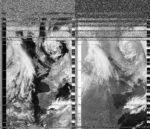
2025-05-23 11:44:00
Goownown Growers
The Seaweed Institute
CAST, Helston, Cornwall, United Kingdom
United Kingdom
NOAA-19

2025-05-23 08:02:00
Iterable pueyrredon
Cordoba , Argentina
Argentina
NOAA-15

2025-05-23 11:27:00
Iterable pueyrredon
Cordoba , Argentina
Argentina
NOAA-18

2025-05-23 11:36:20
Richard A Carter
University of York, Campus East, United Kingdom
United Kingdom
NOAA-18

2025-05-23 11:41:00
Richard A Carter
University of York, Campus East, United Kingdom
United Kingdom
NOAA-19

2025-05-23 11:55:00
Filip Shatlan and Diana Engelmann
Gainesville, Florida , United States
United States
NOAA-19

2025-05-23 10:58:10
Briged McCarthy
Denton TX, United states
United states
NOAA-19
2025-05-23 11:55:35
Derrick Yohn
Transfer, Pennsylvania, United States
United States
NOAA-19

Extra images show PWS and noaa-apt imagery with map overlay
2025-05-23 22:30:00
Cosmos Astronomy Club MIT WPU
Pune, India
India
NOAA-19

2025-05-23 22:31:00
Maufox
Mauritius, Mauritius
Mauritius
NOAA-19

2025-05-23 21:35:28
Alan Robertson
Bathgate, West Lothian, UK
UK
NOAA-19
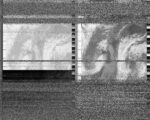
2025-05-23 23:09:49
Alan Robertson
Bathgate, West Lothian, UK
UK
NOAA-18

2025-05-23 20:22:00
Iterable pueyrredon
Cordoba , Argentina
Argentina
NOAA-15

2025-05-23 23:53:00
Iterable pueyrredon
Cordoba , Argentina
Argentina
NOAA-18

2025-05-23 23:14:00
Heidi Neilson
Gilboa, New York, United States
United States
NOAA-18
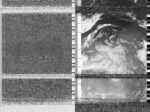
2025-05-24 11:32:00
Goownown Growers
The Seaweed Institute
CAST, Helston, Cornwall, United Kingdom
United Kingdom
NOAA-19

2025-05-24 07:36:00
Iterable pueyrredon
Cordoba , Argentina
Argentina
NOAA-15

2025-05-24 11:27:51
Alan Robertson
Bathgate, West Lothian, UK
UK
NOAA-19

2025-05-24 11:14:00
Iterable pueyrredon
Cordoba , Argentina
Argentina
NOAA-18

2025-05-24 22:04:00
Oppressive Heat
Phnom Penh, Cambodia
Cambodia
NOAA-19

2025-05-24 11:42:00
Filip Shatlan and Diana Engelmann
Gainesville, Florida , United States
United States
NOAA-19
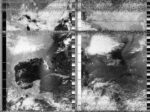
2025-05-24 19:30:00
Cyprus Amateur Radio Society
Nicosia , Cyprus
Cyprus
NOAA-15

2025-05-24 19:14:50
Alan Robertson
Bathgate, West Lothian, UK
UK
NOAA-15

2025-05-24 23:55:00
Maufox
Mauritius, Mauritius
Mauritius
NOAA-18

2025-05-21 11:01:34
Steve Engelmann
Santa Monica, California, United States
United States
NOAA-19

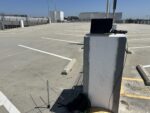


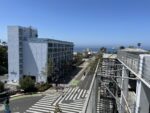
Today I went to the top level of a parking garage next to the Sears building in Santa Monica. It was a beautiful view with clear skies. I was joined by a twenty-something who was using the empty lot to work on his skateboard skills. He also paused a few times to shout some indistinguishable words to someone below. Then he left.
2025-05-24 12:02:37
Steve Engelmann
Pacific Palisades, California, United States
United States
NOAA-18
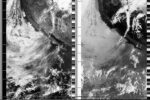
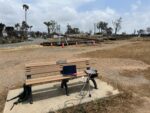
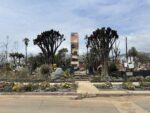
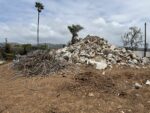

Today's capture was from the Palisades Bluffs. Growing up in the area, I spent many hours staring out at the ocean and contemplating whatever the topic du jour happened to be. Behind me were many piles of rubble and green gardens steps away from ash and a standing chimney. Below the bluffs there is, or was, a trailer park. There was a nonstop cacophony of jackhammers, the sound of trucks backing up, and the rumble of debris falling into a dump truck. More thoughts to contemplate.
2025-05-24 23:55:00
Foto Colectania
Hangar
Ràdio Web MACBA
Barcelona, Spain
Spain
NOAA-18

2025-05-24 22:58:00
Hospitalfield
Arbroath, Scotland
Scotland
NOAA-18
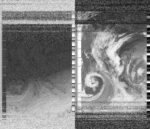
A marked change in pressure. Cool breeze gone. Muggy close heat where before warmth from direct sun. Clear skies replaced by a full array of clouds. Low billowing cumulous and streaky mare's tails above. First rain last night, enough to just wet the ground. A deep inhale of the scent before bed. Train to Dundee along the coast in the morning, the haze is thick over the sea. Tensions run high. There's a far right rally in Dundee (and across Scotland) – well countered and outnumbered but more than anticipated. Union jacks and saltire flags, one that just says 'Jesus' and placards for Reform. They only have rage, we have joy on our side, songs and poems. Our chants ring across the square, louder. Refugees are welcome here. This is what community looks like. This is what solidarity looks like. The crowd breaks up as the student 'revel' begins, ceilidhing in costume as gods and stones and filling the square with messages of peace and love. Whose square? Our square. Crowded and sweaty train home, more factions and colours, but the fans are just happy and sunburnt in their red strips – Aberdeen won the cup.
2025-05-24 22:56:55
Alan Robertson
Bathgate, West Lothian, UK
UK
NOAA-18
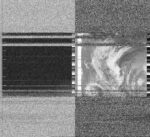
2025-05-24 19:39:00
Zack Wettstein
Seattle, United States
United States
NOAA-15

2025-05-24 23:41:00
Iterable pueyrredon
Cordoba , Argentina
Argentina
NOAA-18

2025-05-24 23:00:00
Heidi Neilson
Gilboa, New York, United States
United States
NOAA-18

2025-05-25 10:37:00
Oppressive Heat
Phnom Penh, Cambodia
Cambodia
NOAA-18

2025-05-25 09:01:00
Hospitalfield
Arbroath, Scotland
Scotland
NOAA-15
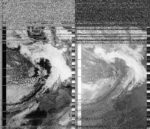
2025-05-25 09:01:02
Alan Robertson
Bathgate, West Lothian, UK
UK
NOAA-15
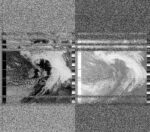

2025-05-25 12:21:00
Foto Colectania
Hangar
Ràdio Web MACBA
Barcelona, Spain
Spain
NOAA-19

2025-05-25 12:55:00
Goownown Growers
The Seaweed Institute
CAST, Helston, Cornwall, United Kingdom
United Kingdom
NOAA-18

2025-05-25 12:51:00
Alan Robertson
Bathgate, West Lothian, UK
UK
NOAA-18
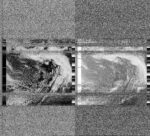
2025-05-25 11:01:00
Iterable pueyrredon
Cordoba , Argentina
Argentina
NOAA-18

2025-05-25 11:25:00
Heidi Neilson
Gilboa, New York, United States
United States
NOAA-19
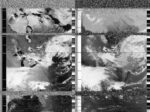
2025-05-25 22:04:00
Cosmos Astronomy Club MIT WPU
Pune, India
India
NOAA-19

2025-05-25 23:41:00
Maufox
Mauritius, Mauritius
Mauritius
NOAA-18
